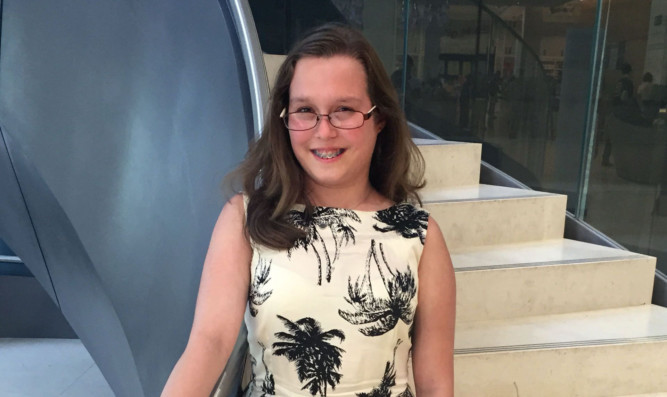Life-changing gene therapy for cystic fibrosis sufferers could be available in the next five years following a landmark trial.
For the first time ever, a gene-altering treatment was shown to improve or stabilise the lung function of patients and lead to significant health gains.
The £3 million trial, involving 136 patients aged 12 and over, is seen as the curtain raiser for a much larger study next year.
Scientist say there is more work to be done but believe they are on track to deliver a therapy that can make a meaningful difference to patients’ lives.
Professor Eric Alton, from Imperial College London, who co-ordinated the trial, said: “For the first time in the world, we have a significant benefit compared with placebo in cystic fibrosis patients.
“If the bigger study shows big benefits then it’s feasible that we’ll be able to offer this treatment to patients by the end of the decade.”
Cystic fibrosis is a rare but devastating inherited disease caused by a single defective gene that causes the lungs to secrete thick mucus. The airways become clogged up and vulnerable to recurrent life-threatening infections.
Lung damage caused by infections is responsible for 90% of deaths of people with CF, who are not likely to live beyond the age of 35. Around 10,000 people in the UK suffer from the disease, which affects one in every 2,500 newborns.
Since the genetic basis of CF was discovered in 1989 scientists have been working on ways to replace the defective gene. But all attempts so far have been thwarted by the body’s protective mechanisms for clearing unwanted material out of the lungs and fighting off foreign invaders such as viruses, which are used to ferry corrective DNA into cells.
The new treatment does not employ viruses but fat globules, or liposomes, that carry the genetic material and are inhaled through a nebuliser. The globules fuse with fatty cell membrane walls and allow the DNA to slip into lung cells.
This type of gene therapy is not a single fix – the treatment has to be repeated at regular intervals as cells die and are replaced.
The trial, conducted in London and Edinburgh, compared the effects of inhaled gene therapy and a dummy “placebo” treatment on 136 patients with CF aged 12 and over.
Lung function was assessed using a common method of measuring the volume of air a patient can forcibly exhale in one second, known as FEV1.
Over the course of a year, patients were given 12 treatments at monthly intervals.
The results, published in The Lancet Respiratory Medicine journal, showed that at the end of the trial lung function was 3.7% better in patients who received the “active” treatment.
Participants with the worst lung function at the start of the study experienced a much greater 6.4% gain compared with those in the placebo group.
Scientists said the “modest” improvements were still significant and a world first.
Prof Alton said: “Patients who received the gene therapy showed a significant, if modest, benefit in tests of lung function compared with the placebo group and there were no safety concerns.
“Whilst the effect was inconsistent, with some patients responding better than others, the results are encouraging.”
However he stressed that even though “a whole swathe” of patients improved, the treatment was not yet ready for use in clinics.
The scientists are now seeking funding for the bigger “improved liposome” trial that could cost tens of millions of pounds, and would hopefully pave the way for rolling out the treatment.
Co-author Professor Stephen Hyde, from the University of Oxford, pointed out that even stabilising cystic fibrosis was a “worthwhile goal”. He added: “We are actively pursuing further studies of non-viral gene therapy looking at different doses and combinations of other treatments, and more efficient vectors.”
Teams of scientists from London, Oxford, and Edinburgh formed the UK Cystic Fibrosis Gene Therapy Consortium to develop the liposome treatment in 2001, supported by the Cystic Fibrosis Trust charity.
The consortium is also working on a new kind of viral gene therapy for cystic fibrosis that could enter early stage clinical trials next year.
A key feature of this treatment, that uses a modified lentivirus to deliver the corrective gene, is that it can be given repeatedly.
If the virus can ferry the therapeutic DNA into stem cells, a long lasting “fix” is possible, the scientists believe. The stem cells would produce “daughter” cells that carried the properly functioning gene.
Prof Alton said: “Our aim is to achieve a step change in the treatment of CF that focuses on the basic defect rather than just addressing the symptoms.”
Ed Owen, chief executive of the Cystic Fibrosis Trust, said: “We are committed to improving and transforming the lives of people with cystic fibrosis, and the results of this pioneering clinical trial are a promising development. Further clinical research is now needed before we can say that it is a viable clinical therapy but it is encouraging that a proof of concept has been established.
“This is an extraordinary time for therapeutic development in cystic fibrosis and the need is urgent to stop so many young lives being cut short because of this cruel condition.”
